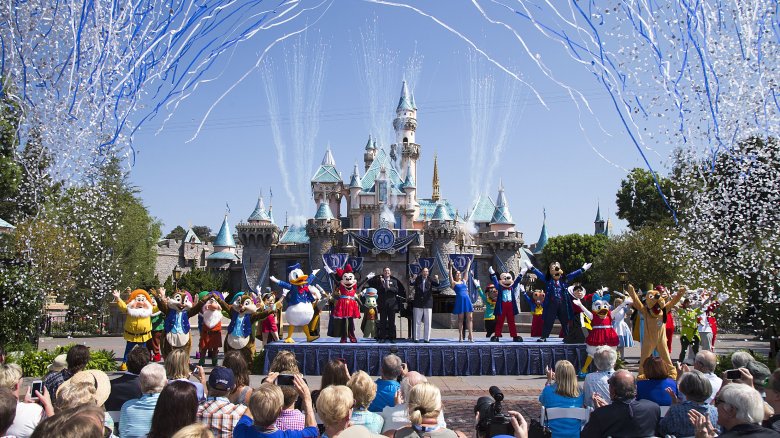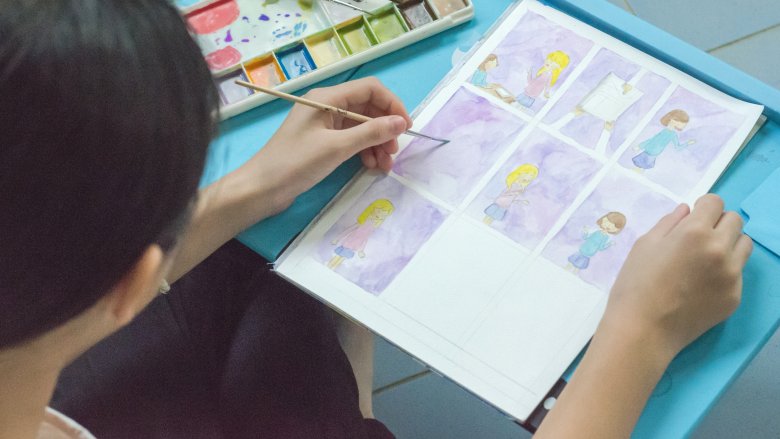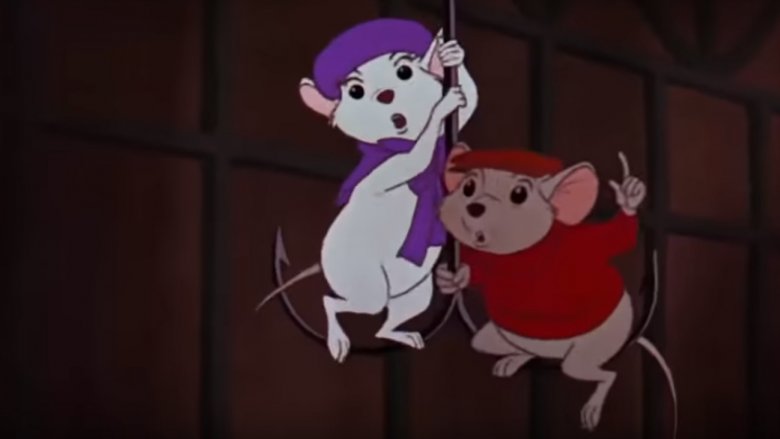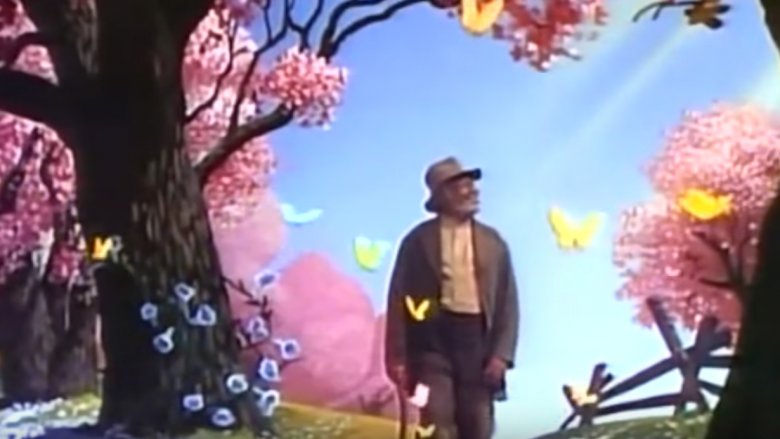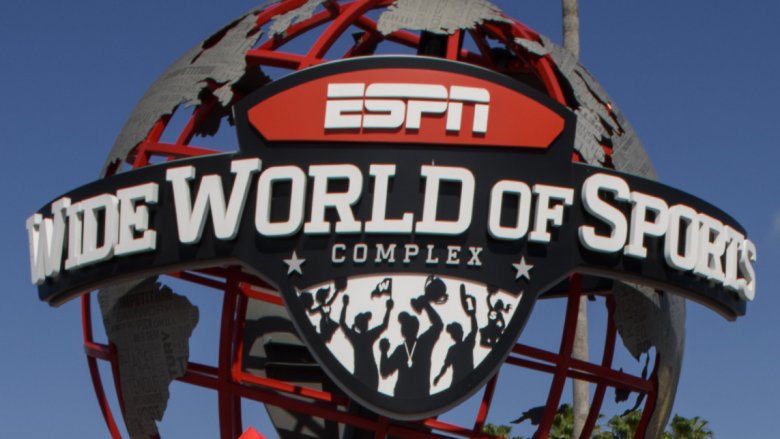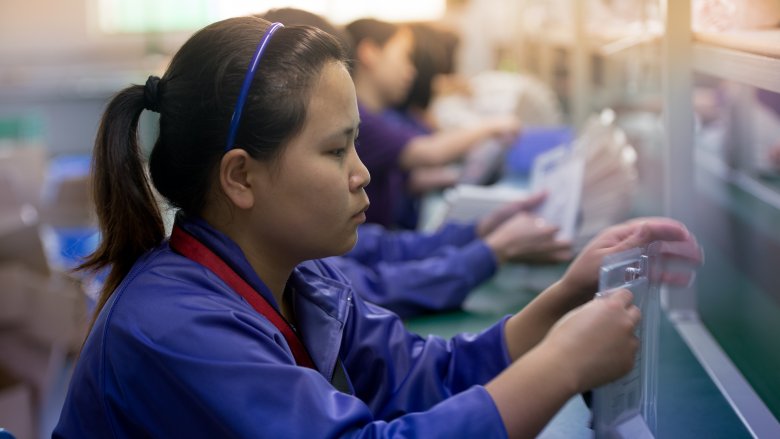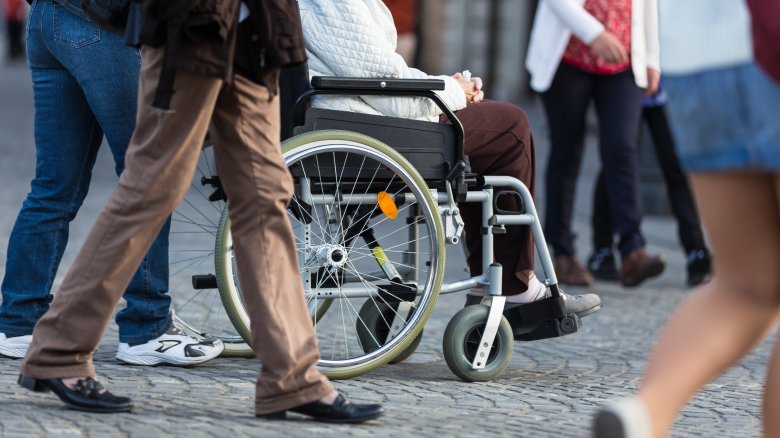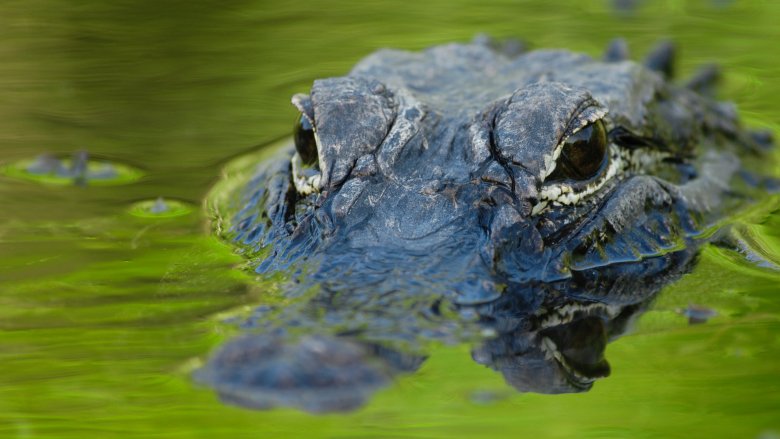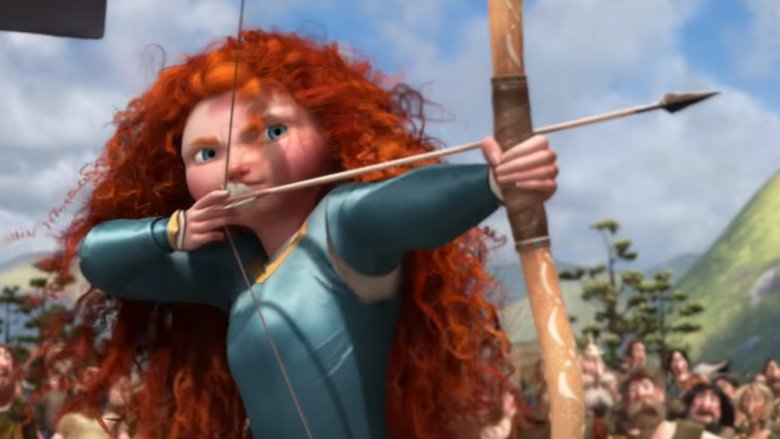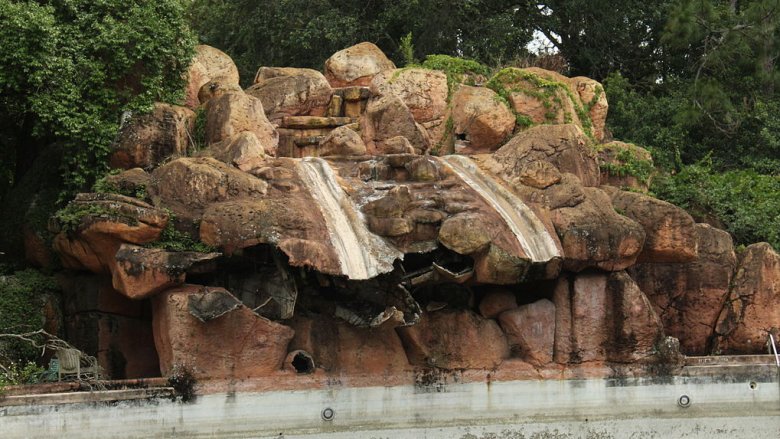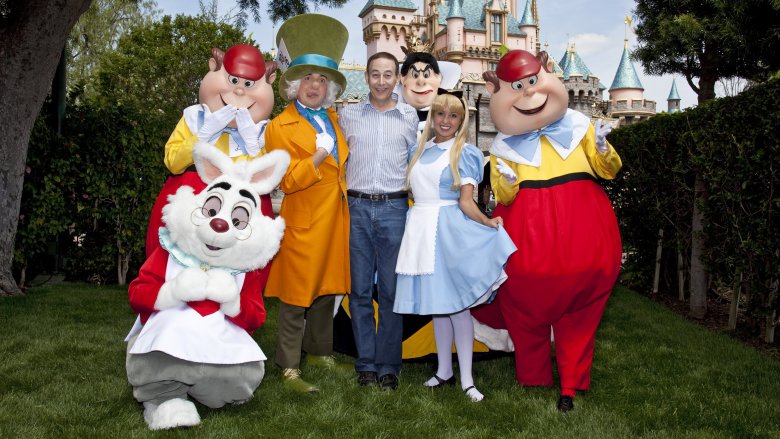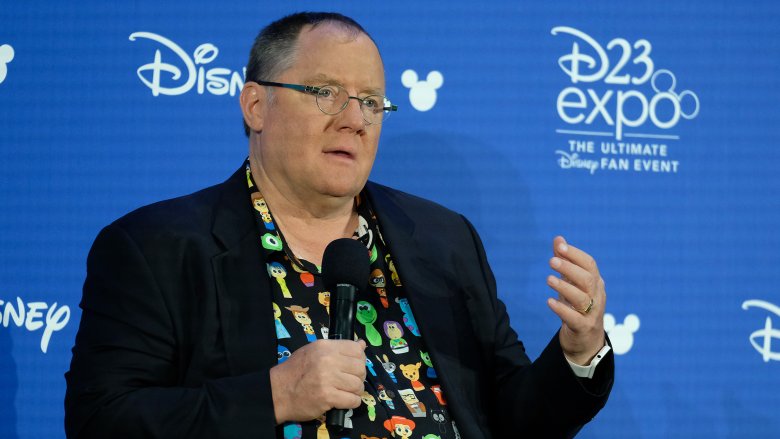The Biggest Scandals To Ever Hit Disney
If Disneyland is the happiest place on Earth, then Disney movies are the happiest movies on Earth — always good, wholesome fun without any racism or topless women. And if you got through that whole sentence without laughing at all the flagrant lies then congratulations on being the most innocent adult human being who ever lived.
Disney — both the movie-making side and the side that runs the theme parks — has tried very hard to be wholesome but even after decades in the business has turned out to just not be very good at it. Early films were full of controversial characters, many of whom were downright racist and misogynistic, and it seems like Disney can't escape the stain of racism and misogyny even today. And that's not all — sweatshops, alligators, intellectual property theft, and brain-eating amoebas — it seems like the only organization more scandalous than Disney is the Lannister court. So if you want happy, wholesome stories, some network somewhere is probably running Little House on the Prairie reruns. For scandal and intrigue, Disney is the place to look.
Women couldn't be animators
After watching all those movies about damsels in distress, it won't surprise you to hear that the Disney of the mid-20th century wasn't exactly progressive when it came to hiring women. In fact Disney was so not-very-progressive that it had a form letter it used specifically to tell women who were interested in becoming animators that they never hired women to become animators. Nice.
"Women do not do any of the creative work in connection with preparing the cartoons for the screen, as that work is performed entirely by young men," the letter reads. According to Open Culture, the letter was standard protocol back in 1938, just after the release of Snow White and the Seven Dwarves. Women could apply to become "inkers" or "painters," though, which were the people who colored in the animated frames. Even so, Disney didn't recommend moving to Hollywood since "there are really very few openings in comparison with the number of girls who apply."
At the bottom of the letter, there's a signature and a picture of the witch with the poisoned apple. You can almost hear her cackling in glee at the pieces of your shattered dreams.
To be fair this was the late 1930s, when there weren't many career options for women anywhere, so in those days this wasn't even a scandal. It wasn't until copies of these letters started cropping up in modern times that everyone went, "Wow, Disney, from a historical perspective you suck."
There was a topless woman in The Rescuers
People just love stories of subliminal things inserted into movies by rebellious animators or suicides that were accidentally captured on film and then left in the final cut for reasons that totally defy logic. Most of these movie legends are either completely fabricated or just based on someone's misinterpretation.
There is one incident, however, that's neither fabricated nor misinterpreted — in the 1999 video release of Disney's The Rescuers, there are two frames that show the image of a topless woman in a window in the background. Oddly, the images weren't spotted by some religious group obsessively going through the video frame by frame in the hope of catching Disney being less than wholesome. In fact they might not have been spotted at all, ever, because they could not be seen while just normally viewing the film.
According to Snopes, Disney itself made the announcement after 3.4 million copies of the tape were already in the hands of consumers. The company said the frames were added in 1977 by someone working on the film in post-production — in other words, they were in the original theatrical release, too.
Disney recalled the video, but some people cried foul and accused the company of deliberately planting the frames and then making the announcement in order to boost sales. Which might have seemed plausible until you consider that recalling 3.4 million tapes is expensive, so one wonders what they really had to gain financially from the whole debacle.
And then there was the racism
There probably aren't too many people at Disney losing sleep over the whole boobs-in-the-window scandal, but we're pretty sure that Disney has a whole lot of collective remorse over its past cultural insensitivity. Or to put it more bluntly, its bigotry.
Back in Disney's heyday, the company did some stuff that was pretty blatantly racist. Everyone remembers the crows from Dumbo, which were clearly an African-American stereotype, although you'll hear plenty of people argue that because the crows were helpful, friendly characters they couldn't possibly have been racist. Never mind that their leader was called "Jim Crow," they were "jive-talkers," and they were portrayed as lazy and kind of stupid.
It gets worse, way worse. One of Disney's most blatantly guilty films was the 1946 Song of the South, which was basically a movie about how much fun it was to be a plantation slave because you got to sing and dance around with a bunch of cartoon animals, which totally makes it all okay. According to the Guardian, the film is so ugly and racist that Disney agreed not to show it again, ever. In the U.S. you can't get it on any officially released DVD, Laserdisc, or VHS. In 2007 there was talk that Disney might reconsider for some reason, but so far you still can't buy Song of the South on Amazon. And we're still arguing that's a good thing.
Also, that time they stole the plans for a whole theme park
Everyone wants to go to Disneyland, and maybe even Epcot Center. Some people even want to go to Disney's "ESPN Wide World of Sports Complex," apparently, because it still exists.
Anyway, not only is there such a thing as Disney's Wide World of Sports, it was also once embroiled in scandal. The park was born not when Disney saw the plans, loved the plans, and hired the plan-making-guys to start work right away. Au contraire, it was born when Disney saw the plans, loved the plans, and then stole them and told the plan-making-guys to go find work elsewhere.
According to CNN Money, in 2000 Disney lost a lawsuit against Nicholas Stracick and Edward Russell, who say they approached Disney with their idea for a sports complex sometime in the late 1980s. And then five years later, Disney was all, "We're building a sports complex!"
The company said they had a vague recollection of Stracick and Russell pitching "sports camps," but the idea for the complex was all their own — despite the 88 documented similarities between Disney's plans and the originals. After the plaintiffs were awarded a huge judgment, Disney whined that it was being treated unfairly. "[The plaintiffs] played the David-versus-Goliath card about as well and persistently as anything I've ever seen," said the company's legal counsel. Hey, maybe don't act like Goliath and then David won't sue you. Just a thought.
Sweatshop retailer of the year, 2001
In the golden years of cheap crap produced with overseas labor, very few people seemed to really care about the working conditions in sweatshop factories. Today, we tend to think of a human rights as being sort of important, although we do still really like our cheap crap.
Anyway by 2001, no one really thought it was okay when Disney started poo-pooing the deplorable conditions at the Chinese factories that produced Disney goods. According to Rabble, Disney was working with not one but 12 Chinese supply factories, where women regularly worked 16 hour days for ridiculously low wages. But that wasn't the only thing that caused the Maquila Solidarity Network to name Disney the "Sweatshop Retailer of the Year" — it was also the fact that Disney just didn't seem to care. Because evidently it's okay to contract with sweatshops as long as you don't actually own them.
Then 10 years passed, and in 2011 Disney factories were in the news again — this time for employing children as young as 14, and forcing workers to do three times as much overtime as permitted by law. Instead of just brushing the whole thing off, though, the Guardian says Disney launched its own investigation, so that's an improvement over the previous decade. Really, though, a company that charges $75 for a freaking sweatshirt ought to be able to use some of that money to contract with a factory that doesn't mistreat their workers, don't you think?
When rich people were exploiting disabled people for front-of-the-line passes
Anyone who says "money can't buy you happiness" has clearly never tried to use wealth and privilege to cut in line at the happiest place on Earth.
While average families save for months just to afford a two-day family pass to Disneyland, people who have money were, until very recently, happily shelling out extra cash so they didn't have to wait in line like all those poor suckers about to enter their second hour in the Space Mountain queue.
In September 2013, CNN reported that Disney was going to change its disabled visitors policy. Instead of granting disabled guests instant access to rides, Disney now gives disabled visitors a ride ticket with a specific time printed on it, so they won't have to wait in line. That means no more instant access, though, so it's sort of a net loss as far as the disabled population is concerned.
So why is Disney doing this? It's because wealthy visitors were paying disabled people to pretend to be family members, so that everyone in their party could skip the line. Yes, besides using wealth and privilege to buy their way into a Disneyland experience that most able-bodied people don't get to have ever, they also ended up wrecking things for people who genuinely need the extra assistance. Well done.
Disney World is crawling with alligators
Disney World is magical and exciting and full of memories just waiting to be made, and also alligators. Because Disney World is in Florida, where alligators are like pigeons.
A lot of Disney's attractions are water-based, like Tom Sawyer Island and the Jungle Cruise. (Jungle Cruise, incidentally, features fake crocodiles, though the guides no longer say the words, "Remember, folks, if you don't watch your children, the crocodiles will.") And it almost seems like Disney was creating alligator habitat on purpose when they built the Seven Seas Lagoon, a manmade lake located between the Disney Grand Floridian Resort and the Magic Kingdom.
In the summer of 2016, a 2-year-old boy was killed by an alligator in the lagoon. Critics blamed Disney for not adequately warning visitors of the danger — according to the Orlando Sentinel, there were "no swimming" signs, but no signs specifically warning guests about the gators.
Disney tries to relocate "nuisance" gators because evidently there is such a thing as a "non-nuisance" gator, and although attacks are rare, the fact they happen at all really seems to be strong evidence against, you know, having swampy lagoons full of alligators on park property.
Sadly, the lagoon isn't the only gator-infested part of the park — a former Disney employee told the Sentinel he once had to delay the opening of Tom Sawyer Island while employees shooed off a family of alligators. So in conclusion, Disney World is cool, but there aren't any gators at Disneyland. Just saying.
Hope you enjoyed that realistic Princess role model because we're changing her
Merida was the first Disney princess who looked like a real girl, you know, rather than a freakishly skinny facsimile of a human female with hair that remains perfect even while scrubbing the castle floors. Because that's a role model girls everywhere can look up to.
Anway, Disney was applauded when Merida, with her much less ridiculous proportions and wild hair became the latest in the long lineup of Disney princesses. People everywhere were like, "Finally, a princess who will inspire girls to be brave instead of inspiring them to develop eating disorders."
And then Disney was working on new marketing material and was all, "Nah, we liked the way things used to be," so they made Merida skinnier, and gave her makeup, bigger boobs, and a sparkly, low-cut dress with dropped shoulders. But hey, at least her hair was still messy, so points?
According to Buzzfeed, Merida's creator wasn't the only one who was pissed off about the makeover — fans didn't like it, either. In fact 200,000 people signed a Change.org petition against the redesign, and Disney actually responded to the outrage by pulling the new version of Merida from its website and replacing her with the original. So hey, sometimes outrage works. Keep up the outrage, people.
More death in the water
Generally speaking, you should just stay away from water at Disney theme parks. Don't do the Jungle Cruise, avoid Tom Sawyer Island, and for the love of glob don't go anywhere near that lagoon. And stay out of the water parks because if Disney can't get rid of all the "nuisance" gators, they definitely can't get rid of the nuisance amoebas.
According to Yesterland, in 1980, an 11-year-old boy died from a rare brain infection known as primary amoebic meningitis (PAM). That's the clinical name for when a freaking amoeba literally eats your brain. Officials determined that he obtained the infection while swimming at Disney's River Country water park in Florida. PAM can happen when a swimmer gets warm freshwater up the nose, which in August is exactly all the freshwater in Florida. And when you're plummeting down a water slide, how likely are you to get water up your nose? Pretty dang likely. And also, PAM is almost universally fatal, so there's that.
After the 1980 incident, officials were quick to say that the amoeba is actually very common, so there's no reason to think that River Country was more amoeba-infested than any other warm water lake or river. Still, there's a little thing called chlorination that mostly prevents PAM in other water parks — River Country, though, pumped its water from a nearby natural lake, amoebas and all.
The park remained open, though — in fact it continued to operate for another couple decades.
Disneyland employees are treated slightly better than those sweatshop workers
We've already established that Disney has a history of using sweatshops to produce cheap crap and/or $75 sweatshirts, which by the way you can probably find on eBay for like $25. Anyway, it isn't just overseas workers who get treated badly — Disney's American workers do, too. Also, workers at Disney's American theme parks get to be called "cast members," which makes everything okay?
Disneyland alone has 30,000 employees, which seems like a ridiculous amount of overhead until you realize that the park had roughly 20 million visitors in 2016, most of whom paid around $117 for their ticket. To be fair, there are also operating expenses, but then there's also the part where guests pay $75 for a sweatshirt and $30 for a taco, so tickets aren't the only source of revenue.
According to the Los Angeles Times, Disneyland's revenue has risen while employee pay has fallen by around 15 percent. Most Disneyland workers make less than $15 an hour, and some only make $11 an hour. If you think that doesn't sound like enough money to survive in Southern California, you're right — more than 1 in 10 Disneyland "cast members" say they've experienced homelessness. So "happiest place on Earth" really only applies to the guests, and even then maybe just the ones who paid a disabled person so they can skip the lines.
John Lasseter's sexual harassment scandal
And because no list of scandals can ever be complete without a good old fashioned sexual harrassment scandal, in 2017 chief creative officer John Lassester announced plans for a six-month leave of absence from the company — not because he needed to recharge his creative batteries or anything, but because Variety says he'd just had a bunch of sexual harassment accusations thrown at him, and he was going to go crawl in a hole for a while.
Lasseter called them "missteps," but they were way, way more than that — employees avoided him at wrap parties because he was known for groping, lewd comments, and "drunken carousing." What's more, Disney knew about his behavior but never took any action against him because, to put it bluntly, he's grossed them around $13 billion in just over a decade.
In 2018 the six-month leave of absence turned into a resignation, and while he was apologetic it was more like an "I'm sorry you think I was bad" sort of apology rather than an "I'm sorry I was bad" apology. In a memo he wrote to employees just before his leave of absence, he mentioned "unwanted hugs" and said, "no matter how benign my intent, everyone has the right to set their own boundaries and have them respected." So to sum up, groping is just "unwanted hugs," and lewd comments are benign. Gotcha, John.
